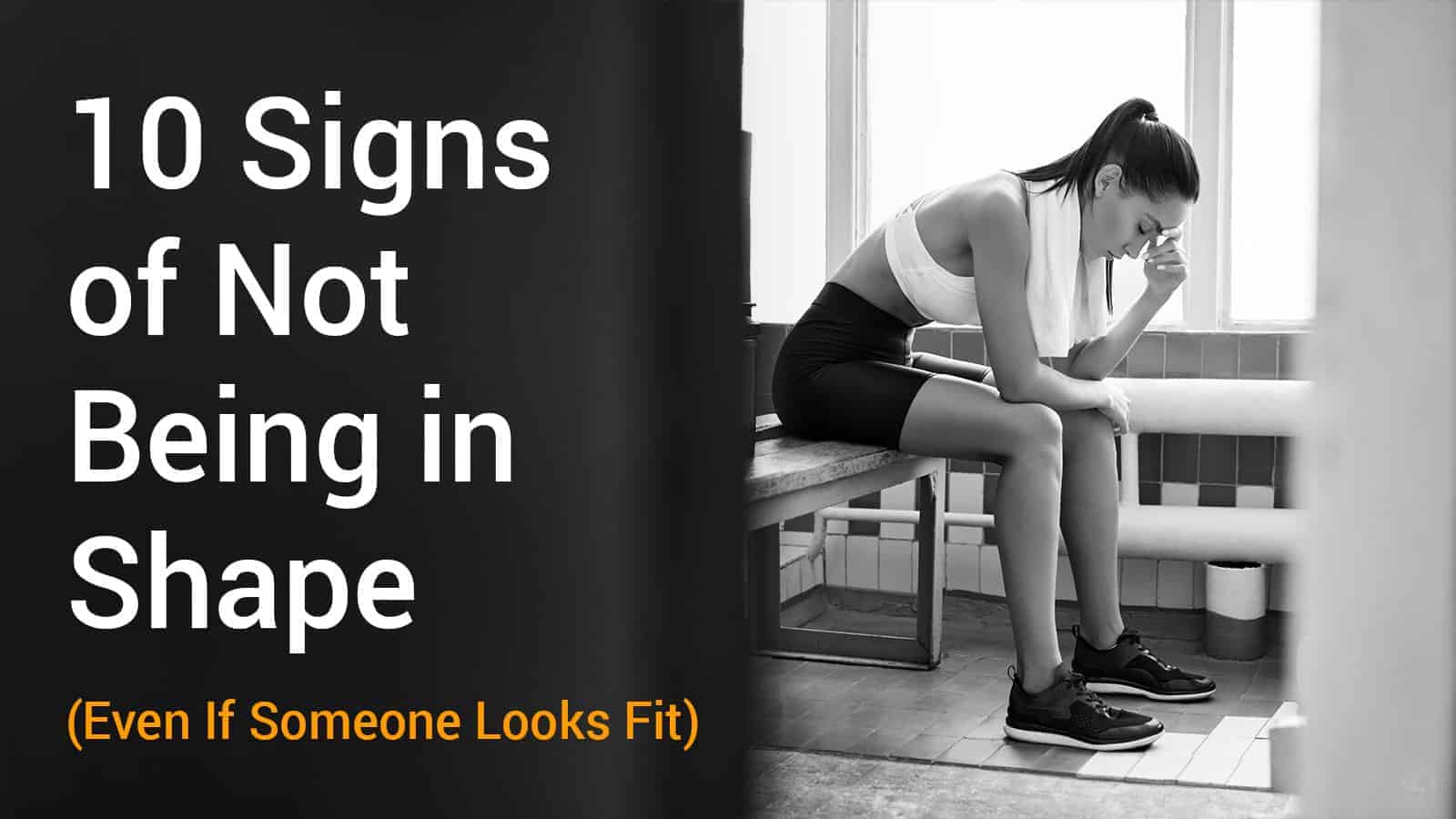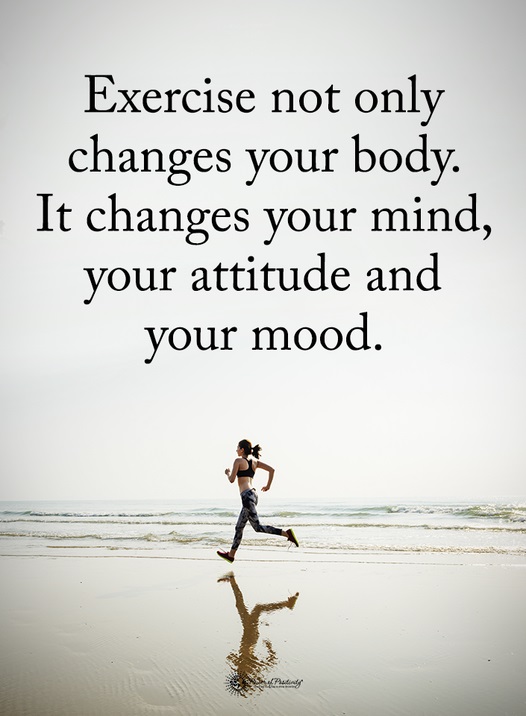Do you ever wonder if you’re truly in shape? Sure, you may look healthy, but there’s more to fitness than meets the eye. With so many people focusing on appearance, it’s easy to overlook the subtle signs that your body may not be functioning at its best.
Even if you’re not overweight, hidden indicators might reveal that you aren’t as fit as you think. But don’t worry, recognizing these signs is the first step toward improving your health—and it’s easier than you might think!
In this article, we’ll explore ten key questions that will help you evaluate your fitness level. You’ll gain insight into what your body is telling you and discover practical steps to get back in shape, no matter where you stand now.
Are You Getting Breathless from Everyday Activities?
Feeling winded after walking up a short flight of stairs or even performing light activities might be more than just being “out of shape.”
This can often be an indicator of poor cardiovascular health or other underlying issues like respiratory problems.
Why Does This Happen?
When you walk up stairs, your body requires more oxygen to fuel your muscles. For people who are not conditioned or have weak cardiovascular systems, this increased demand causes breathlessness.
This can be a sign that your heart isn’t efficiently pumping blood or that your lungs aren’t delivering enough oxygen to your body.
Additionally, conditions like coronary artery disease (CAD) or other heart conditions can restrict blood flow, making it harder for your body to perform even mild exercises without strain.
Feeling breathless during daily tasks can also stem from deconditioning or long-term inactivity.
Signs of Poor Cardiovascular Health
- 😮💨 Shortness of Breath: Especially noticeable when climbing stairs or walking short distances.
- 💓 Rapid Heart Rate: Your heart may beat faster than usual even when you’re at rest.
- 🛌 Fatigue: Struggling to complete even moderate physical activities like walking or light exercise.
This breathlessness shouldn’t be ignored, as it could be a sign of more serious cardiovascular issues. If you find that you’re frequently out of breath after minimal exertion, it might be worth consulting a doctor for a stress test or evaluation.
Tip: Improving cardiovascular health starts with small steps like walking more frequently or incorporating gentle aerobic exercises into your routine.
10 Signs You Are Not in Shape
It’s easy to think that being fit is all about appearance, but there are many internal and external signs that reveal the truth about your physical condition. Here are 10 key signs that you might not be in as great shape as you think:
1. Back Pain When Standing for Long Periods
Weak core muscles are a major contributor to back pain, especially when standing for extended periods.
This type of discomfort signals that your posture needs improvement, and core exercises could help prevent long-term damage.
Hint: Strengthening your core can prevent persistent back pain and improve your overall posture.
2. Sore Arms After Simple Tasks
If lifting light objects or performing daily tasks leaves your arms sore, it’s a sign that your muscles aren’t engaged enough. Gradual strength training can help rebuild endurance and restore muscle function.
Hint: Your arms shouldn’t tire so quickly—it’s time to strengthen those musclesz.
3. Fast Heart Rate at Rest
An elevated resting heart rate is often linked to poor cardiovascular health, meaning your heart is working harder than it should. Aerobic exercises like walking or cycling can help bring it down over time.
Hint: A racing heart, even while resting, is your body’s way of telling you to take better care of your cardiovascular health.
4. Frequent Injuries During Exercise
Frequent injuries are a sign that your muscles and joints aren’t strong or flexible enough to handle physical activity. Incorporating mobility and strength training into your routine will reduce the likelihood of getting hurt.
Hint: Recurring injuries? They’re a sign that your body isn’t prepared—focus on strength and flexibility.
5. Fatigue After Simple Activities
If daily activities like walking leave you feeling fatigued, it’s likely that your stamina and cardiovascular fitness are low. Adding small amounts of exercise to your routine can gradually build your endurance and improve your energy levels.
Hint: Constant fatigue after simple tasks signals a need for regular physical activity.
6. Difficulty Lifting Objects

Struggling to lift everyday items, like groceries, points to weak upper body muscles. Regular strength training can help you rebuild the necessary strength and ease this discomfort.
Hint: If basic lifting tasks feel challenging, it’s a sign your upper body strength needs work.
7. Weak or Sore Legs After Short Walks
If your legs feel weak or sore after a short walk, it indicates underdeveloped lower body muscles. Squats, lunges, and other lower body exercises can help improve endurance and strength.
Hint: Weak legs after short walks are a clear call for strength-building exercises.
8. Difficulty Sleeping After a Long Day
Fitness and sleep are closely linked—poor fitness levels can negatively affect your sleep quality. Regular exercise can help tire your body naturally and improve your overall sleep.
Hint: Struggling with sleep? Physical fitness plays a crucial role in restful nights.
9. Prolonged Soreness After Working Out
Soreness after exercise is normal, but if it lasts for more than a couple of days, it may be a sign that your body is not conditioned. Stretching, along with pacing your workouts, can help alleviate this.
Hint: Recovery taking longer than usual? Your body might be telling you to take it slow and steady.
10. Lack of Balance
Struggling with balance—like standing on one leg for just a few seconds—shows weak core and stabilizer muscles. Regular balance exercises can help improve your coordination and stability.
Hint: Balance isn’t just for gymnasts—core strength is essential for daily stability.
How to Get Back in Shape?
Getting back in shape can feel overwhelming, but it’s easier when you break it down into small, manageable steps.
The key is to start slow and be consistent. Here are some simple, actionable steps to help you regain your fitness:
- 🎯 Start with small, achievable targets to build confidence and momentum.
- 🏃♂️ Pick exercises that you actually enjoy doing.
- 🐢 Begin with low intensity and gradually increase as you regain strength.
- 💪 Combine both strength and cardio exercises for balanced progress.
- ⏰ Add quick exercises into your daily routine, like squats or planks.
- 💧 Drink plenty of water to boost energy and aid recovery.
- 📸 Use photos or logs to track improvements and stay motivated.
- 🦵 Prioritize proper form to avoid injury and ensure effective workouts.
- 📅 Have a structured weekly workout plan to maximize time and results.
- 🧘♀️ Include rest or active recovery days to prevent burnout and injury.
- 🤝 Social support can help you stay accountable and make workouts fun.
- 🏋️♀️ Build muscle gradually with bodyweight exercises or light weights.
- 📺 Fit exercise into daily tasks, like squats during TV ads.
- 🔮 Visualize yourself achieving fitness goals to boost motivation.
- 🩺 Consult a healthcare professional for personalized advice before starting.
FAQs
How can I tell if I’m out of shape even if I’m not overweight?
Being out of shape isn’t just about weight. Poor cardiovascular health, frequent fatigue, and lack of strength or endurance can all indicate you’re not as fit as you think, even if you’re not overweight. Pay attention to how your body responds to physical activities like climbing stairs or lifting everyday objects.
How quickly can I get back in shape after a long break from exercise?
The time it takes to get back in shape varies depending on factors like age, current health, and how long you’ve been inactive. However, with consistent, moderate exercise, most people can start noticing improvements in strength and endurance within 4 to 6 weeks.
Is soreness after a workout a good sign of fitness improvement?
Occasional soreness is normal, especially when starting new exercises, but prolonged soreness can be a sign you’re pushing too hard. It’s better to gradually increase the intensity of your workouts to avoid injury and allow your body time to adapt.
What exercises are best for getting back in shape after a long period of inactivity?
A combination of low-impact cardio exercises (like walking or swimming) and strength training (using light weights or bodyweight exercises) is ideal for regaining fitness after a break. Start slowly and increase intensity over time.
Final Thoughts
Getting back in shape is a journey, not a race. By recognizing the signs and taking small, consistent steps, you’ll see improvements sooner than you think.
Remember, fitness isn’t just about looking good—it’s about feeling strong, energized, and confident. So, start today.
Whether it’s a short walk or a quick set of squats, every move counts. Don’t wait for “Monday” or “next week.”
Your body will thank you, and future you will be glad you did!



















